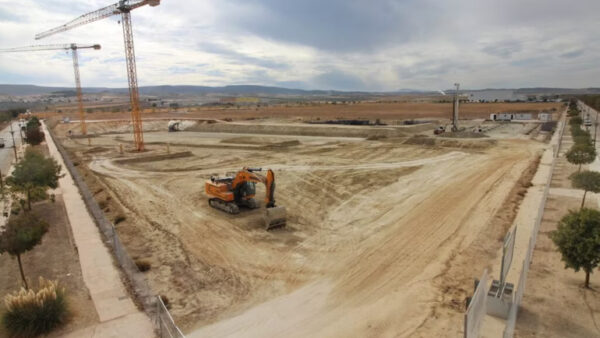An extra 435,000 pupils will be joining the UK’s secondary school system by 2020-21 as the country’s population grows, and they will need more than 14,500 extra secondary classrooms, a report says today.
That means more than 400 brand new secondary schools will need to be built in the next three years, far surpassing the current rate of school building.
Although the greatest need will be in England (13,337 classrooms), the challenge is country-wide, with 527 extra classrooms needed in Scotland, 340 in Wales and 318 in Northern Ireland, to meet projected growth.
The challenge has been called “very significant” given the recent record of building just 63 new state-funded secondary schools in England in the six years from 2010 to 2016.
The study, by public sector procurement body Scape Group, is based on government school capacity forecasts. Scape used the study to call for a national schools building strategy, including adding storeys to existing schools and using modular construction techniques to speed up delivery.
“Secondary school pupil numbers are set to rise significantly and there is a real risk that if we do not increase the output of new secondary school classrooms there will be significant pressure on places across the UK,” said Scape Group chief executive Mark Robinson.
“Such is the scale of the projected increase in secondary school pupils that the Government should now seek to develop a National School Building Strategy that brings together the Department of Education, local and regional government, and industry. We must ensure there is a joined-up approach that embraces modern methods of construction such as modular and offsite techniques, which can deliver schools quickly and cost-effectively.”
Scape told GCR that according to the UK’s Department of Education’s latest statistics, just 63 new state-funded secondary schools were built in England from 2010 to 2016, meaning the additional schools needed is “very significant” since, according to Scape’s projections, 381 new schools will be needed in England.
Population growth
The study notes that the UK population is set to increase by 3.6 million over the next 10 years.

Image courtesy of Scape Group
The latest projection figures show that while growth in primary school pupil numbers has begun to level off in England, the secondary school population is set to see a significant spike as these children move into secondary education.
London will see the biggest increase in secondary school pupil numbers in the UK, with the Capital set to experience a 15.5% rise by 2020. This is the equivalent of 2,500 classrooms, or 73 schools.
Within London, the Borough of Barking and Dagenham is set to see an increase of 40% in secondary pupil numbers by 2020, the highest in the country.
Outside of London, Manchester City Council is forecast to see the biggest percentage increase, with secondary school pupil numbers forecast to increase by 35% in the next three years. This is the equivalent of 321 additional classrooms.
What to do
To tackle the challenge, Scape Group’s recommendations include:
- Formulating a ‘National School Building Strategy’ bringing together the Department of Education, local authorities and the delivery marketplace;
- Authorities looking at sharing new facilities, such as a local leisure centre, community space or council building, with primary schools;
- Building schools of up to three or four storeys;
- Adopting offsite-modular construction to allow faster delivery.
“The Government must view this situation as a priority,” said Mark Robinson, “it is critical that we do not fail our children by not providing enough new secondary school places.”
The full report, The Secondary School Places Challenge, will be available today at: www.scapegroup.co.uk/research
Top image: The study notes that the UK population is set to increase by 3.6 million over the next 10 years (Monkey Business Images/Dreamstime)
Comments
Comments are closed.







Well what a surprise! And it’s only 7 years since Mr Gove abandoned ‘Building Schools for the Future’ – politicians really do have very little long term vision – it hardly needed another study to predict this situation.